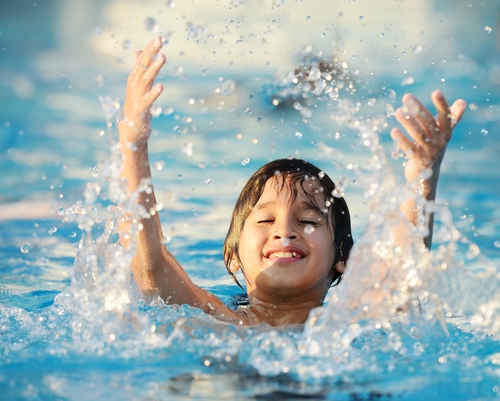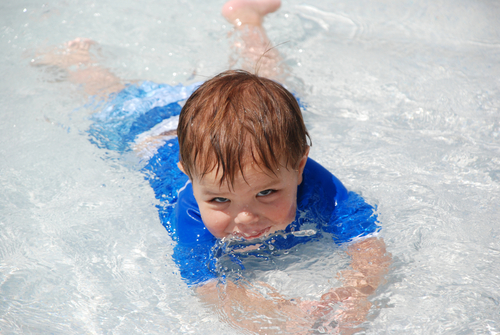
As a parent with a backyard pool, your goals are for your children to be safe in the water and for your pool to provide tons of fun and happy childhood memories. To do that, your children have to learn how to swim. Where do you start? Do you enroll your children in organized swim lessons at the community pool or the YMCA?
There are lessons available for all ages, including infants with Mom or Dad classes. They can be a big help, especially if you are unsure of how to go about teaching your children to love the water. The downside? The classes are at a scheduled time, and that may not mesh with your children’s schedules—or yours—on lesson day.
Good news! You have an above ground pool for your kids in your backyard, and you can take your children in the water at any time that fits your children’s moods or your schedule. You can take as many days or even weeks as it takes to complete each step of the process of learning to swim. You won’t be limited to once-a-week sessions. You can incorporate the lessons into the fun time you spend with them in the pool. Best of all, it will be in a familiar pool because it’s in your backyard.
Here are 4 steps to get you started. Remember, there are plenty of swim coaches that you can hire who will come to your home, too. Don’t feel like you have to go at it alone!
Make water a fun experience. Make sure your children don’t develop a fear of water because of your reactions. If your children accidentally get splashed in the face, or water runs over their heads in the tub or shower, as well as in the pool, don’t rush to clear the water off. Instead, smile and praise them for getting their faces wet. When you are swimming with your face in the water, smile when you surface. Your children will associate being in the water with having fun. Whenever your children are more than an arm’s length away from you, they should be wearing a Coast-Guard-approved safety vest until they’re comfortable in the water.

Breath control. Stand in waist- to chest-high water or sit on the pool steps. Start with blowing bubbles in the water. Make it fun by changing the tone to low pitch or high pitch or blowing in different rhythms, and then take turns imitating each other. When your children are comfortable with their faces partially in the water, you can advance to teaching them to put their heads under water. Show them how to hold their noses and put their heads under. Count loudly and see what their “all-time world record” is. Each time you play this game, they will try to beat their own records.
Swim movements. Once your children are comfortable getting their faces in the water, move on to teaching the leg and arm movements required for swimming. Hold your children’s hands and have them extend their legs behind them as you pull them around your pool. Let your children get comfortable with the sensation of floating on top of the water. Add kicking their legs with knees straight and toes pointed. When your children kick, walk faster. Walk in patterns like figure-eights or a snake. Sound effects always make it more fun. Hiss like a snake or vroom like a race car. Now, add the arm movements. Start with your children standing in chest-high water. Teach them to scoop the water with hands cupped and fingers together. Once they have the movement learned, hold your children on top of the water and let them practice the scooping while you move them through the water. Finally, have them try to do both the leg kick and arm movements together.

Free swim. Stand in the water with your children facing the side of the pool. They should be wearing their safety vests. The goal of this step is for your children to successfully reach the side of the pool by themselves, so start only a couple feet away from the side. Help your children up to the swim position, and remind them to kick, and then push them toward the side of the pool. Give lots of praise for being a swimmer! Gradually increase the distance from the side of the pool until your children can swim the distance from one side to the other in your backyard pool.
As your children move from relying on you to becoming more confident in the water, you may want to utilize pool noodles or kickboards to help them remain independent. Remember, encouragement is key, so be sure to keep complimenting them as they venture out into the water.
 Hello Guest,
Hello Guest,  158 item(s)
158 item(s)
